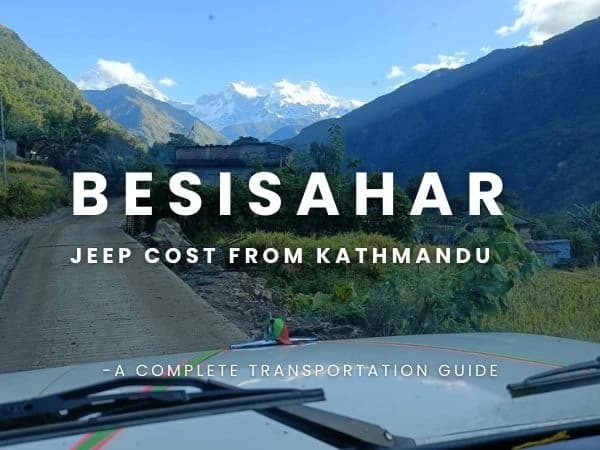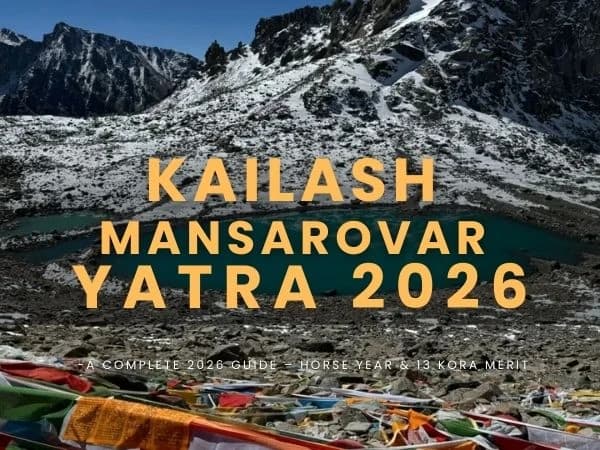6 Tips for Everest Base Camp Trek for Beginners:
1) Acclimatize Properly:
During the Everest base camp trek, the lowest elevation gain is 2610m in Phakding, and the highest is 5545m at Kalapathar. And people living in relatively lower elevations may have different problems with the rising altitude. As the altitude level increases, the oxygen level and temperature decrease, making trekkers prone to altitude sickness with symptoms like headache, nausea, dizziness, lethargy, disturbed sleep and dehydration. In many cases, altitude sickness is life-threatening. Hence, it is crucial that novice trekkers stick to the itinerary with acclimatization days, take breaks, and stay 1-2 nights in lower elevations so that their bodies get used to the elevating altitude. Acclimatization in Namche, and Dingboche will help beginners to trek without exhausation and make it to the base camp.
2) Slow and Steady makes it to the base camp:
Many trekkers think making it to the base camp in the shortest time is a real achievement, but the truth is being on the base camp perfectly healthy is the main goal. Slow walking, taking breaks, and hydrating are crucial to avoid health hazards. Hence, listen to your body and let your muscles heal from the strain caused by the previous day's walk. As the goal is to reach the teahouse of the next destination, you can start early and continue to walk at your pace, take breaks, and soak in the views rather than hovering all the way and ending up tired or sick.
3) Sleep well, and eat healthy:
On your Everest Base Camp trek, you will be walking continuously for 6-7 hours for 13-14 days, which means your body will ache in the worst possible way, making it hard to sleep. While body pain is one of the reasons, the unheated rooms of the teahouses can be another cause for sleep deprivation. Since the temperature is low at a higher altitude, you must be careful about layering even when in bed. The teahouses only provide a single blanket, so sleep on your sleeping bags and layer it with blankets to keep your body warm. Drinking warm herbal tea can also work if you are having trouble sleeping.
While sleeping is necessary to let our body rest and wake up fresh, having a balanced diet is also equally necessary. The teahouses of the Everest region offer wide varieties of food that can provide both heat and energy, so make sure you get all the supplements like vitamins and minerals required by the body. One thing we always recommend to our trekkers is to avoid meat products, as the meat may upset their stomachs. You can eat noodles, Dal Bhat, Roti Tarkari, dumplings, pancakes, boiled potatoes, soups, eggs, and others to keep your body warm and energized.
4) Train your body:
When you are planning for the Everest base camp trek, the first thing you have to do is train your body. You must be physically and mentally prepared for the challenges you might face on the trail. Hence, we recommend building your upper and lower body strength, endurance and flexibility. The main thing to consider is increasing your cardiovascular condition, which can tolerate the thin air of a higher altitude. For this, trekkers can go on long and short hikes with uphill, downhill routes and rough terrains. Trekkers can try push-ups, lunges, and squats that involve their whole body parts.
One can also try different aerobic workouts like box jumps, jumping squats, Zumba, spinning, step aerobics, swimming, and biking, which are known to keep our hearts healthy. Doing these kinds of aerobic workouts will help you to sustain the thin air in the trek.
5) Choose the right Itinerary:
Choosing a suitable itinerary is another prominent step after training for the trek. The trekking company in Nepal offers a variety of options for the Everest base camp trek. The only difference is the day spent on the trail and in Kathmandu or other places around Nepal. Although the EBC trek with shorter days will lure you, you must always go with the program with enough acclimatization days and two extra days in the beginning and at the end of the trek for the Lukla flight. The Lukla flight can get cancelled due to bad weather, so it is best to have a few extra days that can cover any halt caused on the trail or because of the flight cancellation.
6) Pack your essentials only:
Instead of packing random things that you might not use on the trail, always pack smart and light. The best way to do this is by following the packing checklist prepared by the trekking companies, which includes toiletries, layerings, trekking equipment, snacks and personal medication and other medications for headaches, fever, stomachache, diarrhoea, a first aid kit, pain killers, and diamox tablet. Packing only the essential items will help you manage your stuff as well as help the porter who has to walk to EBC carrying your backpacks.
Also Read: How to Become A Responsible Trekker?

The Best Everest Base Camp Trek Itinerary:
Day 1: Arrival in Kathmandu
Day 2: Extra day in Kathmandu (Sightseeing around UNESCO site and Trek preparation)
Day 3: Fly to Lukla (2860m) from Kathmandu and Trek to Phakding (2610m)
Day 4: Trek to Namche Bazar (3440m)
Day 5: Acclimatization day in Namche (explore Namche, hike to Everest view hotel)
Day 6: Trek to Tengboche (3860m) and visit Tengboche Monastery
Day 7: Trek to Dingboche (4410m)
Day 8: Acclimatization day in Dingboche
Day 9: Trek to Lobuche from Dingboche (4910m)
Day 10: Trek to Gorakshep (5140m), hike to Everest Base camp (5380m)and trek down to Gorakshep
Day 11: Hike to Kalapathar (5545m) and trek down to Pheriche (4240m)
Day 12: Trek down to Namche Bazar (3440m)
Day 13: Trek to Lukla (2860m)
Day 14: Fly to Kathmandu (1400m)
Day 15: Free day in Kathmandu
Day 16: Departure
Permits required for Everest Base Camp Trek:
To trek to the Everest Base Camp, trekkers require three different permits namely the TIMS Card, Khumbu Pasang Lhamu Rural Municipality entrance card and Sagarmatha National Park Permit. You can issue the TIMS card through the Tourist Service Center or Trekking Agencies Association Nepal (TAAN) or your trekking agency will issue it on your behalf. The TIMS card cost Rs. 2000 per person. While the Sagarmatha National Park entry fee costs Rs. 3000 and the Khumbu Pasang Lhamu entrance fee is Rs. 2000.
Also Read: 6 Reasons Why you must add Everest Base Camp Trek to your travel bucket list
Best Time for Everest Base Camp Trek:

The beauty of the Khumbu region is refined with each season. If you are trekking in the Spring (March-May), you can see the glistening Himalayas and the trekking trail is adorned by wildflowers and rhododendrons forests. While trekking in the monsoon (June-August) can be tricky, especially because of the heavy rainfall, which leads to slippery trails and clouded views of the Himalayas.
However, even in monsoon, when it's not raining, the trek can be joyful as it is less crowded. Similarly, trekking in winter (December-February) is all about cold weather and piles of snow. However, the views of the snow-covered Himalayas beat the snow-covered trail that requires special trekking equipment. The peak season for the Everest base camp trek is undoubtedly Autumn (September-November), when the monsoon cloud recedes, bringing chills in the air. During this time of the year, you can feel the cold breeze, temperature is lovely, and the views are grand.
Although the EBC trek can be done throughout the year, for beginners the best time is during the spring and autumn as the temperature is lovely, and the views are majestic. Trekking is also easy during this time in comparison to the slippery and snow-covered trails of monsoon and winter.
Conclusion:
The Trekking Guide Team Adventure has been offering a variety of trekking itineraries around Annapurna, Everest, Langtang and Manaslu regions.
If you are planning for your next venture to the epic Everest Base Camp, remember the Trekking Guide Team for a customizable trekking itinerary.
No matter if you are an experienced or a novice trekker, we will make an itinerary that will suit your preferences and make your time in the Khumbu region worthwhile.

Here are some People Also Ask Queries:
1. Do I need a TIMS card for Everest Base Camp Trek?
2. Can I trek solo to the base camp?
3. Can a beginner trek to Everest Base Camp?
4. How to be ready for the Everest base Camp trek?
-
The main thing to consider while preparing for the Everest base camp trek is to increase cardiovascular endurance and body flexibility. For this, trekkers can try doing aerobic exercises, pushups, swimming, step aerobics, and short and long hikes that will help them during the trek.
5. What is the easiest trek to see Everest and other Himlayas in Nepal?
-
The Everest View trek is the easiest way to see the Everest. During this trek, you will trek up to the Everest View Hotel and enjoy the panorama of Everest, Ama Dablam, and Thamserku while sipping tea/coffee. This trek can be completed in 6-8 days, depending on extra days on your itinerary.
Related Blogs:
✔ Everest Base Camp Trek Insurance
✔ Everest Base Camp Trek in December









